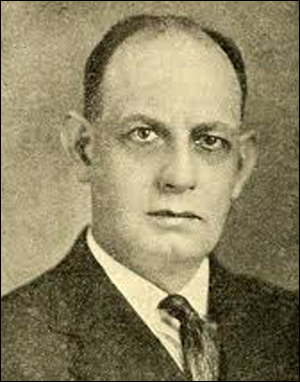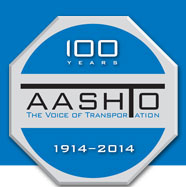
March 26, 2014
AASHTO Presidential Profile: Presidential Profile: Frank Page, North Carolina

Frank Page of North Carolina served as AASHO president just over a decade after the association had been established. His time in office, as a matter of fact, would mark a significant time for the association's history and in particular the fruition of its key achievements: designating the routes for the U.S. Numbered Highway System.
Page was born on Feb. 23, 1875, in Cary, N.C. He came from one of the Tar Heel State's leading families—his brother Walter Hines Page served as the U.S. ambassador to the United Kingdom during World War I.
Frank Page's own journey to fame and accomplishment began early on with the completion of his preparatory education at the Davis Military Academy in Winston-Salem, followed by his attendance at the University of North Carolina. After receiving a college education, Page entered the lumber business in partnership with his father and brothers. One of the transportation-oriented results of that business was bringing together two family-built logging railroads to form the Aberdeen and Asheboro Railroad in 1897. The Page family operated that railroad until it was bought by the Norfolk Southern Railway (NS) in 1911. Frank Page would serve as general superintendent of the NS lines west of Raleigh for a few years until resigning for a career in banking.
After the U.S. entered World War I, Page served with the rank of major in the U.S. Army Corps of Engineers in France. He returned to North Carolina after that war, and in April 1919 Governor Thomas W. Bickett appointed him chairman of the state's newly formed Highway Commission. He found himself in charge of what the Chicago-based Highway Magazine called "the herculean task of building some five thousand miles of hard-surfaced roads throughout the State," all the more challenging because of what was seen as the generally poor condition of those routes.
Page's overall success in tackling those challenges was reflected in the fact that North Carolina became known as "The Good Roads State." By 1930, North Carolina would have a statewide system of paved roads. Thanks to Page's leadership and efforts, North Carolina also became one of the first states to adopt a gasoline tax for highway financing.
Page's accomplishments brought him acclaim not only within North Carolina itself but also across the nation. A Utah-based newspaper, for example, highlighted "the able direction of Frank Page" in making travel along North Carolina's roads "possible at all times of the year." Highway Magazine offered similar praise for his record. "His is a big position occupied by a big man," according to that magazine. "He is well known in the highway world and he is recognized throughout the country as one of the biggest men in the game today."
That national stature helped Page get elected to a one-year term as chairman of the American Association of Road Builders in 1923. In 1925, President Calvin Coolidge named Page one of five U.S. delegates to represent the nation at that year's Pan American Road Congress in Buenos Aires, Argentina. Page used that time abroad not only to attend that conference but also to visit several other countries in both South America and Central America to inspect their own developing highway systems first-hand.
Page likewise took on leadership roles on behalf of AASHO. He was elected the association's president in November 1925 at the annual meeting in Detroit.
Page's tenure encompassed efforts to focus on a huge easier-said-than-done task that involved the recently created U.S. Numbered Highway System: selecting and marking the locations for the routes within that network. In 1925, a committee had been appointed to handle that task; the committee's members included 21 from various state highway departments and three from the U.S. Bureau of Public Roads (BPR). Ultimately, the committee issued its report in October 1926 and AASHO formally approved the locations of those routes the following month at the annual meeting in Pinehurst, North Carolina. BPR officially announced those approved routes early the next year.
It was also during Page's time as president that AASHO continued working on and finalizing the Manual and Specifications for the Manufacture, Display, and Erection of U.S. Standard Road Markers. That document, which would be released in 1927, was the first national guidebook when it came to addressing standardized sign shapes and colors.
Page pursued other priorities as well. The Second National Conference on Street and Highway Safety took place in Washington, D.C., in March 1926, and Page used that year as AASHO president to similarly emphasize the importance of that issue.
After stepping down as AASHO president, Page continued serving as head of the North Carolina Highway Commission until retiring in 1929 to resume his banking career. He became executive vice president of the Wachovia Bank & Trust Company and was in charge of its Raleigh branch. He remained in that position until his death on Dec. 20, 1934, at the age of 59. He was buried in his family's plot in Old Bethesda Cemetery near Aberdeen, N.C.
"In the case of Mr. Page his life's work was wrought long before he passed away," eulogized North Carolina's Burlington Daily Times newspaper. "He had the pleasure few enjoy, that of seeing his handiwork well finished before he answered the last summons. Of him it may well be said, as of the great architect, Sir Christopher Wrenn: ‘If you would seek his monument, look about you.'"












